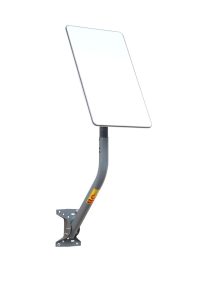The Future of Satellites: Revolutionizing Global Connectivity
The future of satellites is poised to revolutionize global connectivity, enabling faster and more reliable communication networks. With advancements in technology and increasing demand for satellite-based services, the industry is expected to experience significant growth in the coming years. The integration of satellites with other technologies, such as 5G networks and the Internet of Things (IoT), will further enhance their capabilities and applications.
Introduction to Satellite Technology
Satellite technology has come a long way since the launch of the first artificial satellite, Sputnik, in 1957. Today, there are thousands of satellites orbiting the Earth, providing a wide range of services, including communication, navigation, weather forecasting, and Earth observation. The development of new satellite technologies, such as satellite constellations and high-throughput satellites, has improved the efficiency and capacity of satellite-based services.
Advancements in Satellite Technology
Recent advancements in satellite technology have focused on improving the performance, efficiency, and cost-effectiveness of satellite-based services. Some of the key developments include the use of reusable launch vehicles, advanced propulsion systems, and high-gain antennas. The integration of artificial intelligence (AI) and machine learning (ML) algorithms with satellite systems has also enhanced their capabilities, enabling real-time data processing and analytics.
The emergence of satellite constellations, such as those developed by SpaceX and OneWeb, has transformed the satellite industry. These constellations consist of hundreds or thousands of small satellites working together to provide global coverage and high-speed connectivity. The use of satellite constellations has reduced the cost of launching and operating satellites, making satellite-based services more accessible to a wider range of users.
Applications of Satellite Technology
Satellite technology has a wide range of applications, including communication, navigation, weather forecasting, and Earth observation. Satellites play a critical role in providing communication services, such as broadband internet, telephone, and television broadcasting. They also enable navigation systems, such as GPS, which provide location information and timing signals.
Satellites are also used for weather forecasting, providing images and data on weather patterns, storms, and climate changes. Earth observation satellites, such as those used for remote sensing and mapping, have numerous applications, including environmental monitoring, disaster response, and natural resource management.
Future of Satellites
The future of satellites is expected to be shaped by several factors, including technological advancements, changing user needs, and evolving regulatory frameworks. The integration of satellites with other technologies, such as 5G networks and IoT, will continue to enhance their capabilities and applications. The development of new satellite technologies, such as quantum satellites and satellite-based solar power systems, will also play a significant role in shaping the future of the industry.
The increasing demand for satellite-based services, driven by the growing need for global connectivity and the expansion of the digital economy, will drive the growth of the satellite industry. The use of satellites for sustainable development, such as environmental monitoring and disaster response, will also become more prevalent in the future.


